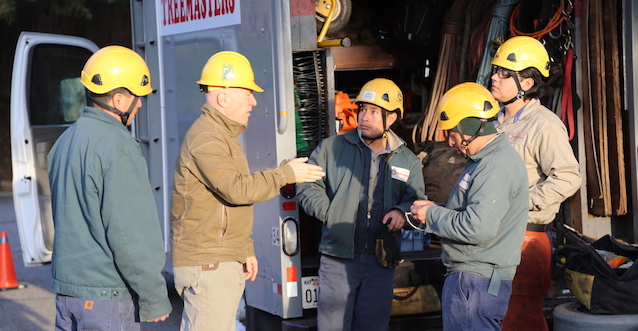During the 2015 TCI Expo, Vermeer interviewed more than a dozen tree care business owners and asked them about the biggest challenges facing their businesses. Most responded with “finding qualified workers” or “low profit margins.”
Investing in training for new and current employees can help tree care business owners overcome both of these obstacles.
According to Tony Tresselt, lead instructor for North American Training Solutions (NATS) and Arboriculture Canada Training and Education, training workshops help crews learn new techniques that allow them to work safer, smarter and more efficiently, which pays off in the long run.
“As new and different climbing techniques come into the industry — or when companies purchase new equipment — a certain amount of training is required to educate crews to operate more productively,” Tresselt says. “The amount of training needed will vary by the arborist’s skill level.”
Crews and owners alike may also experience intangible rewards from formal training sessions.
“Training can give employees a sense of accomplishment,” Tresselt says. “It also shows that their employer is willing to invest in them.”
Emergency readiness
New employees should be trained on first aid, CPR and electrical hazards — which includes everything from transmission lines to extension cords — right away.
“It’s the nature of our industry that we’re working at heights, and it’s a good idea to look into more advanced first aid training,” Tresselt says. “While a person may only be 50 feet (15.2 m) away from you, they’re 50 feet (15.2 m) up in the air. There are some additional things — like broken bones and excessive bleeding — that basic first aid training doesn’t cover.”
In addition, Tresselt strongly recommends crews receive aerial rescue — also called aerial emergency —training.
“It can be hard to reach a victim that is hurt 60 or 70 feet (18.3 or 21.3 m) up in a tree,” Tresselt says. “Crews need to be familiar with emergency protocols and have 911 phone scripts to help them share important information with the operator, in case of an emergency.”
Tresselt instructs companies to repeat first aid, CPR, electrical hazard and aerial rescue training annually.
Equipment safety
When Tresselt leads a training workshop, he includes chainsaw, brush chipper and stump grinder safety curriculum.
“Basic equipment operation, maintenance and safety protocols should be reviewed with your employees several times a year,” Tresselt says. “Training should be viewed as a reminder to bring us back to the basics.”
Select the right training course
Training courses are offered on the local and national levels through several industry associations, and the curriculum, formats and skill levels vary.
“When you make the decision to invest in formal training, make sure the workshop meets your crew’s learning style so they get the most out of it,” Tresselt says. “Most arborists are very hands-on. They’ll only learn so much by straight-up lectures. I find the best training courses blend both classroom time and hands-on skills training. I do a little bit of classroom time to get everyone on the same page, and then we go out into the field and actually apply it.”
Skill levels will depend on an arborist’s past experiences, the individual’s learning curve and the difficulty of the curriculum.
“I usually tell people that if it’s a fairly complicated technique that you’ve never done before, you need to get a solid foundation through a training workshop,” Tresselt says. “But if it’s just a refresher course, there are other resources available. For example, a trade show seminar is a minimal cost and time investment. If you hear something that interests you there, you can invest in additional training later.”
Create a culture of safety
Some tree care company owners are hesitant to send their crews to a day-long training workshop because of lost productivity and revenue. Others are concerned about the registration and travel costs.
“If you think education is expensive, you should try ignorance,” Tresselt says. “An incident can cost tens of thousands of dollars — even if it’s relatively benign. Training costs are minimal, in comparison. Unfortunately, that argument resonates the most once an incident has occurred. At that point, owners are being reactive instead of proactive.”
There is another sub-set of contractors that are just happy doing things the way they’ve always done them, but this thinking is becoming obsolete.
“Traditionally, in this industry, a lot of training is done on-the-job or just handed down from one person to the next. It’s kind of a culture thing,” Tresselt says. “I think arborists get to a point in their careers that techniques have advanced beyond what they already know. Most tree care company owners will come to the realization that to become more productive, they have to invest in continually training for their crews.”
